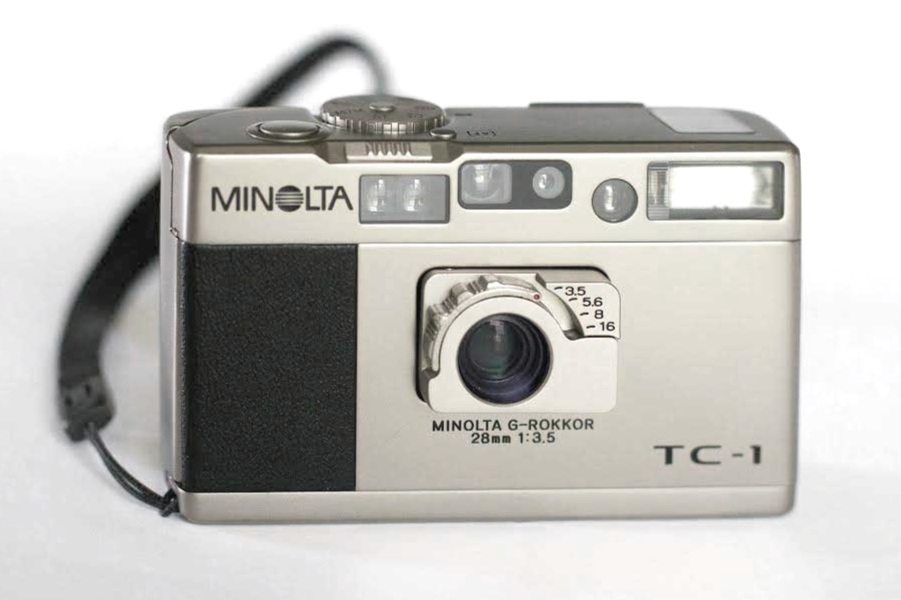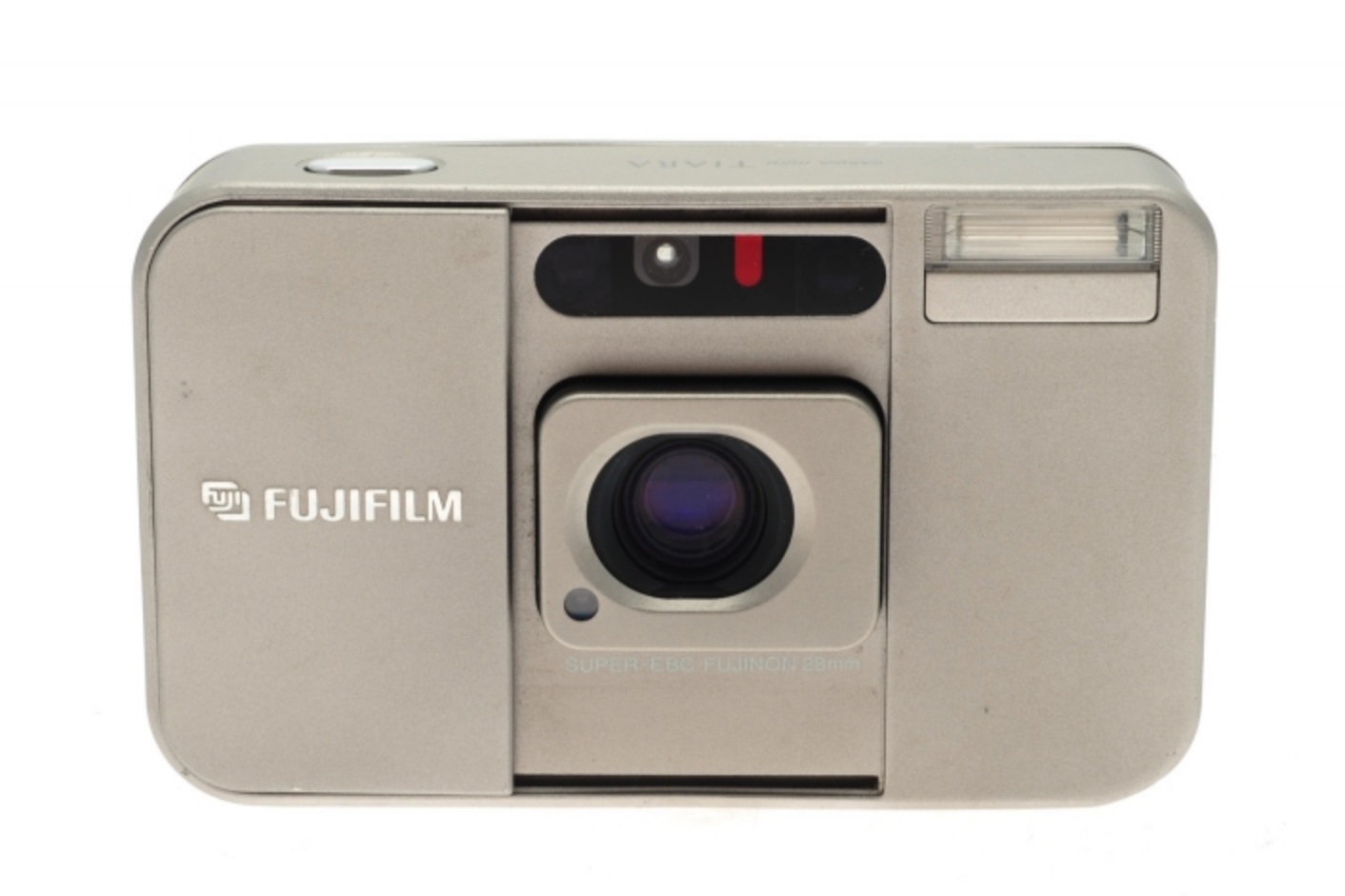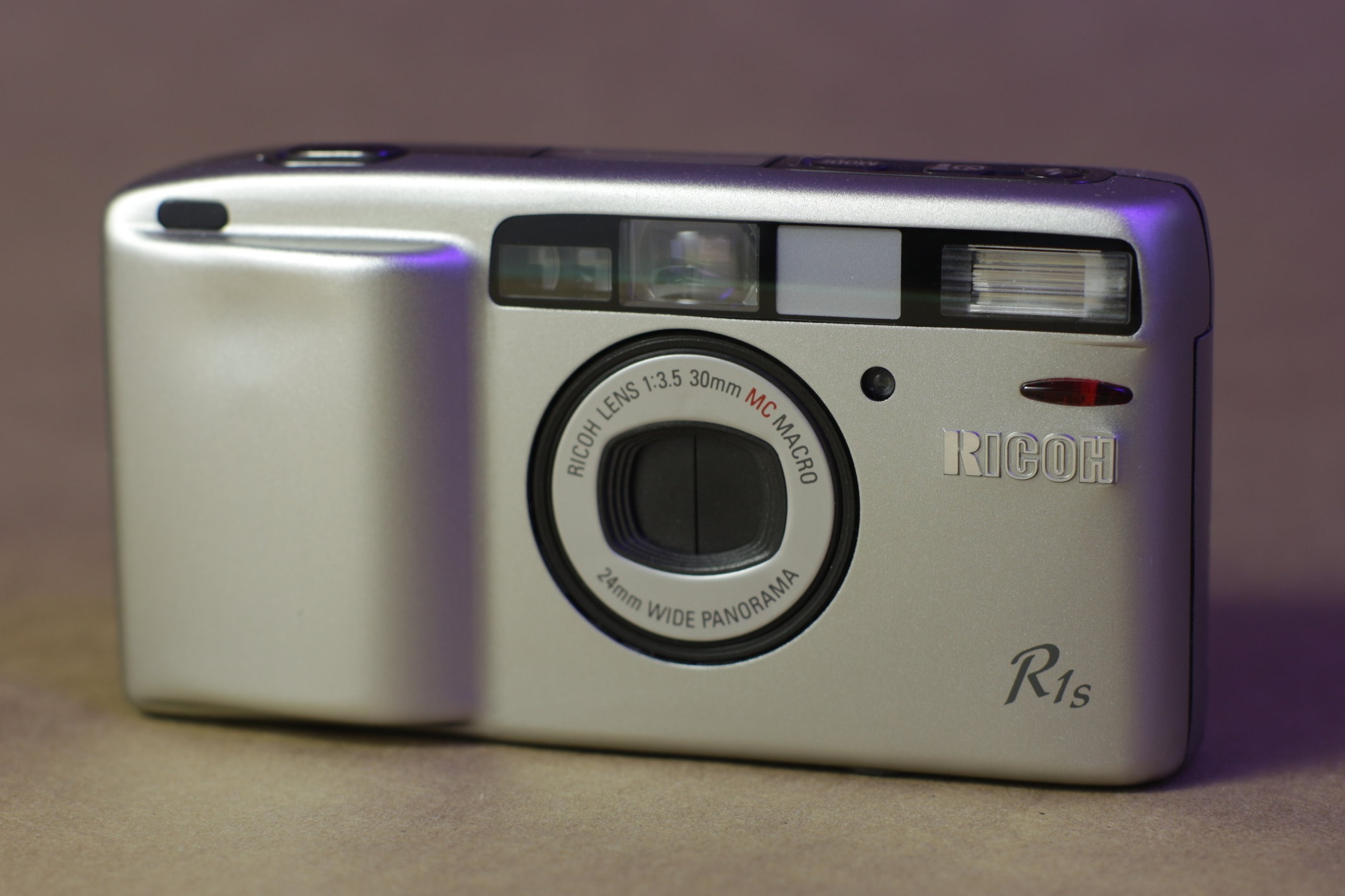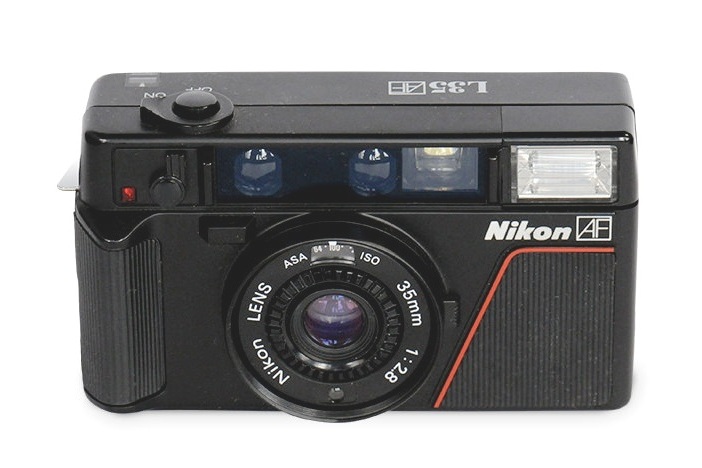Instagram, eBay, and websites like this one are filled with images and info on premium compact cameras that most of us cannot afford, and just maybe have never even seen in person. If you really wanted one of these premium compact film cameras you could save the money in time and make your dream a reality, but when other film cameras offer comparable features and similar looks for 1/5th the price, is it really worth it? If you want instagram likes and “wow” reactions from your fellow film shooters then maybe, but why not spend smarter instead of harder? Here are 4 affordable alternatives to expensive point and shoot film cameras.
Minolta TC-1 Alternative
Minolta TC-1
Photo by The Darkroom (film developing services)
Price: $600 - $900
Released: 1996
Lens: 28mm f/3.5
Body: Titanium, Leatherette
Color: Champaign or Black
Size: 99 x 59 x 29.5mm
Weight: 185g
The Minolta TC-1 released in 1996 has a razor sharp fixed G-Rokkor 28mm f/3.5 lens with a very likable bokeh. It was Minolta’s answer to the Contax T2, Hexar AF, and Nikon Ti series. The list price upon release varied between 1400 and 2000 USD. In 1996 it was given The Camera Grand Prix award by the Camera Press Club of Japan. It weighs just 7 ¼ oz or 185 grams, which is about the same as 10 rolls of film.
That’s quite a feat of engineering for an automatic focus point and shoot, the size of the TC-1 is nearly equivalent to some of the smallest 35mm film cameras ever made, such as the Olympus XA, Contax T, and Minox GT - all of which do not have engineering inside for autofocus. The TC-1 also has a lens that retracts into the body and covers, a feature common in high end point and shoot film cameras.
Fuji Tiara
Image by Kamerastore.com
Price: $200 - $300
Released: 1996 (unconfirmed)
Lens: 28mm f/3.5
Body: Aluminum, Plastic
Color: Champaign
Size: 100 x 60 x 31.5mm
Weight: 153g
The Fuji Tiara also known as the DL Super Mini, and Cardia Mini Tiara. There was also a Fuji Tiara II which included a strap lug on one side of the camera. It has a clamshell design that when closed over the lens makes the camera resemble a bar of soap or sardine can.
The Tiara’s lens specifications perfectly match that of the TC-1’s 28mm f3.5. In addition to the champaign finish and palm-able size the Fuji Tiara makes for a great Minolta TC-1 alternative. Supposedly some of the other variants moved to a f4.5 maximum aperture. The Fuji Tiara has a pretty strong fan base for those who have discovered it. It’s unclear to me how many were made as there is not a lot of available info on this camera aside from individual camera reviews.
The lens is not to be underestimated, I have even seen [from Japan Camera Hunter] at least one person spending the money to convert the lens from the Fuji Tiara into a Leica M-mount.
Nikon 28 Ti Alternative
Nikon 28 Ti
Image by Austin Calhoon
Price: $650 - $850
Released: 1994
Lens: 28mm f/2.8
Body: Titanium, Leatherette
Color: Black
Size: 118 x 66 x 36mm
Weight: 315g
The Nikon 28 Ti is an advanced compact 35mm point and shoot camera that first debuted in 1994, one year after the Nikon 35 Ti, which was the same camera but in a champaign finish and 35mm lens. The first thing to mention about the Nikon 28 Ti film camera is the high quality fixed 28mm f2.8 lens and the excellent 6-segment 3D Matrix metering (whatever that means!). But yes the meter is very good I have used this camera myself. With a meter like that it pairs great with slide film which doesn’t do well with anything other than a perfect exposure.
After the lens and metering the next feature this camera is known for is its suer cool analog dials on the top plate. The 4 analog dials display focus distance, aperture, exposure compensation, and number of pictures taken. All settings remain visible much like digits on an analog watch, and when a setting is set or changed the dial turns and points to indicate the current setting. Combined with a small light that illuminates the display, the whole interface is reminiscent of the face of an old car stereo. The analog dial setting feature is not only unique but feels as practical as a digital or rotary display.
This is a premium film camera, with a premium, lens, build material, and price tag. As many of these on the list, the camera is likely to spontaneously stop working one day. Even so I might take my luck for this beautiful camera with prices only sure to rise in the future.
Nikon AF600
Image by ClassiCameras
Price: $75 - $150
Released: 1993
Lens: 28mm f/3.5
Body: Plastic
Color: Black
Size: 108 x 62 x 32mm
Weight: 155g
The Nikon AF600 also known as the Nikon Lite Touch and Nikon Mini Touch, may not seem that different from the thousands of other point and shoots out there. Two main features set his camera apart, the first making at an affordable alternative to the Nikon 28 Ti. The first less common feature is its 28mm wide angle lens. Most point and shoots that have a fixed lens settle somewhere between a focal length of 35 to 40mm. In fact it was the worlds smallest compact camera with a 35mm f2.8 lens at the time it was released.
The second feature that makes this camera stand out from the crowd is its macro mode. The Nikon AF600 can focus as close as around 1 foot / 0.3 meters. It also has a commonly unappreciated panoramic mode (as does the Nikon 28 Ti), plus a quartz date capability on some versions.
A friend of mine recently took this camera to Azerbaijan with great results. The design of the Nikon AF600 resembles that of the Konica Big Mini line with its crate / barrel lens protrusion out of the front of the camera when powered on. It doesn’t look exactly like the Nikon 28 Ti but its about the closest you can get while still having comparative size and lens specs.
Ricoh GR1 Alternative
Ricoh GR1
Image by Cameraville
Price: $400 - $700
Released: 1996
Lens: GR Lens 28mm f/2.8
Body: Magnesium Alloy
Color: Black or Cream
Size: 117 x 61 x 26.5mm
Weight: 175g
The Ricoh GR1 was first released in 1996 as a professional variant of the 1994 Ricoh R1. The Ricoh GR1 is praised for its lens performance, small size, and unique features designed for street photography like the “snap focus” function.
The 28mm f/2.8 GR Lens is so good it was even made in a limited edition run in Leica screw mount, and I have never seen on [even used] below $800. For what you get and the price the Ricoh GR1 is not a bad deal - but it’s a big gamble when you find out that any day could be its last.
Sadly wires and battery powered gears have a hard time doing their job 23 years later - The Ricoh GR line of film cameras are notorious for having a broken top LCD and many times stopped working all together for no apparent reason other than time. In fact this happened to me with the camera pictured above. I still remember the moment mine died, and the last picture I never took while on a bridge in Budapest.
After the Ricoh GR1, Ricoh went on to release the GR1s, GR1v, and GR21 (21mm lens wow!), in subsequent years before switching the line over to the Ricoh GR Digital.
Ricoh R1
Image by Cameraville
Price: $75 - $150
Released: 1994
Lens: 30mm f3.5 & 24mm f8
Body: Plastic
Color: Silver or Deep Blue
Size: 117 x 61 x 25mm
Weight: 145g
You don’t have to look far to find a great affordable alternative to the legendary Ricoh GR1. Ricoh has provided that for us, and 2 years earlier than at that. The Ricoh R1, R1s, and hard to find R1e are just what you’re looking for.
When you first look at the Ricoh R1 camera it’s hard to believe there’s a film cartridge inside - it’s just that slim. A bit quirky, it seems to have its own twist on the dual focal length trend on the late 80s, where a compact point and shoot would have something like a 35mm and 50mm option with the use of one lens (often with poor performance on the secondary focal length).
The Ricoh R1 has a 30mm f3.5 standard lens with an option to shoot at 24mm f8 panoramic, very interesting and fun. Many people hack the camera to shoot full frame 24mm by removing the plastic panoramic masks from inside the camera - be warned, vignetting ensues. At 30mm f3.5 it’s not far off in specs to the more expensive and more well-known Ricoh GR1 film camera. As far as looks go, it’s nearly identical to the GR1 aside from the color options and lack of premium materials.
Later Ricoh release the Ricoh R1s (pictured) which changed the lens from single-coated to multi-coated. Then there was a Ricoh R1e which removed the panoramic wide angle option. So if you had your pick I would go for the Ricoh R1 single coated if you are a black and white shooter, and go for the Ricoh R1s for the multi-coated-ness if you are a color film fan.
Konica Hexar AF Alternative
Konica Hexar AF
Image by Camerapedia,wikia.com
Price: $450 - $650
Released: 1993
Lens: 35mm f2.0
Body: Magnesium Alloy
Color: Black, Gold, or Rhodium Mint
Size: 137.5 x 76.5 x 64.mm
Weight: 549g
The Konica Hexar is quite a chunky boy, a large point and shoot film camera with rangefinder styling and a very bright f2 35mm fixed lens. First introduced in the US in 1993 it provided the ease of autofocus in a more ‘professional’ looking body. 6 years later in 1999 Konica released the Konica Hexar RF which took the exposure automation of a point and shoot and put it in a Leica-mount Konica rangefinder body.
The Konica Hexar AF has a very rare maximum aperture specification of f2. As far as I know I cannot think of another point and shoot camera film camera with an f2 lens. Though the crazy expensive Fuji Natura S with its 24mm f1.9 does come to mind.
The Hexar AF also came in a few special / anniversary editions including your classic 90s gold edition as well as a very nice looking Rhodium Mint edition.
Nikon L35AF
Photo by Imaging.nikon.com
Price: $50 - $150
Released: 1983
Lens: 35mm f2.8
Body: Plastic
Color: Black
Size: 124 x 73 x 45.5mm
Weight: 394g
Released in 1983 the Nikon L35AF was Nikon's first AF point-and-shoot camera, nicknamed "Pikaichi" within the industry, which means "top notch" in Japanese. If you take a minute to look at the two models, the design language of the Nikon L35AF and Konica Hexar AF are remarkably alike. This with the similar lens specs make the Nikon L35AF a great Konica Hexar AF alternative, especially of you are on a budget.
From the shape of the grip to the top arch of the lens slightly peeking up into the viewfinder area, it’s not a stretch of the imagination to think the Hexar AF’s designers took some inspiration for the L35AF a decade earlier. Additionally the L35AF is the only camera on this list from the 80s if that’s your thing.
If you found this information valuable please consider supporting the site by buying a camera shirt from my store, thank you.


















![Classic [Black] SLR Film Camera Tee](https://images.squarespace-cdn.com/content/v1/58e7646c3e00be081c92c968/1541528853961-MGKE0EAHBL8MIPRDC1NL/1971+OM1+Black+C.jpg)
